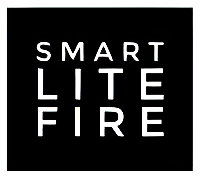Beginner’s Guide to Campfire Building for Cooking and Warmth
Posted on August 31 2025

Beginner’s Guide to Campfire Building for Cooking and Warmth
There’s just something about the smell of smoke and the flicker of flame after a long day outside that makes a campfire special. Whether you’re toasting marshmallows, cooking dinner, or just soaking up the warmth, knowing how to build a campfire is an essential outdoor skill.
In this guide, you’ll learn how to choose the right fire structure, gather the right materials, and build your campfire step by step—safely and effectively for long-lasting results.
Choose the Perfect Campfire Location
Choosing the right spot is extremely important. Pick a flat, open space away from tents, low branches, and other flammable items. If you’re at a campsite, use the designated fire ring or pit—these are ideal.
If you aren’t in a campsite, prepare your own area by clearing a ~10-foot (3 m) radius. Remove leaves, sticks, and other debris. Good preparation is the foundation of building a safe campfire.
Gather Your Campfire Materials
Collect the three fuel types you’ll need:
- Tinder — small, very dry material like dry leaves, pine needles, birch bark, or wood shavings.
- Kindling — small sticks and twigs about pencil-width.
- Fuel wood — larger logs or split wood for sustained burning.
Pick Your Fire Structure
Your fire’s shape determines how it burns and how much heat it gives off:
- Teepee Fire — Best for quick meals; flames rise fast.
- Log Cabin Fire — Great for steady, even warmth over hours.
- Star Fire — Conserves wood; ideal for long, slow burns.
Match the structure to your goal—fast heat for cooking or steady embers for warmth—while keeping airflow open so the fire doesn’t smother.
Light the Fire
- Place a bundle of tinder in the center of your chosen structure.
- Build a loose nest of kindling around or over the tinder (don’t pack it tight; air is fuel!).
- Light from the upwind side so flames carry into the kindling.
- As the kindling catches, add fuel wood gradually to maintain airflow and flame.
If you’ve brought a fire starter pod, tuck it under the kindling for reliable ignition—simple and consistent.
Cooking Over a Campfire
For cooking, aim for predictability. Let the fire burn down to a glowing bed of coals; coals provide steady, even heat compared with open flames.
- Use a grill grate for pots, pans, or cast-iron skillets.
- Roast skewers over coals for even cooking.
- Keep water nearby to handle flare-ups.
Once you know how to build a campfire specifically for cooking, you can have fun with foil-packet dinners, cast-iron stews, or freshly grilled fish.
Building a Fire for Warmth
For a long, comfortable heat source, choose a log cabin or star structure. These radiate steady heat for hours. Add new fuel a little at a time to keep a consistent, glowing fire.
Campfire Safety and Cleanup
- Never leave a fire unattended.
- Keep water or sand close by.
- Before you go, fully extinguish the fire: pour water, stir the ashes, and repeat until no hissing, smoke, or heat remains.
- Only leave when the ashes are cool to the touch.
Final Thoughts
Keep this guide handy and you’ll quickly master how to build a campfire. With the right location, materials, and structure, you can start a safe, efficient, and enjoyable fire every time—perfect for cooking, staying warm, and creating memorable nights outdoors.




0 comments